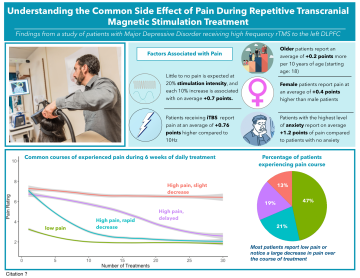Electroconvulsive Therapy (ECT) in Treatment-Resistant Depression
When all else fails, treatment-resistant depression can be especially debilitating: it is associated with recurring depressive episodes, higher risk of suicide, and a greater amount of hospitalizations. For those who fail ≥ 2 gold-standard antidepressants or otherwise have a need for rapid improvement, electroconvulsive therapy (ECT) may be the solution. ECT (in its modern sense) has been used for more than 90 years, but the persisting stigma and media portrayal related to treatment procedures mean it is rarely used in clinical treatments – even though it could help many recover from even persistent depression. This review article examines myths and facts about ECT, including its current use, safety, and side effects.
Understanding the Common Side Effect of Pain During Repetitive Transcranial Magnetic Stimulation Treatment
The symptoms of depression are bad enough without enduring side effects from the medications used to treat them. Newer treatments without drugs include repetitive transcranial magnetic stimulation (rTMS), a non-invasive procedure where patients receive a series of short magnetic pulses over the scalp to stimulate the nerve cells of the brain. Daily 40-minute treatments using a protocol called high-frequency stimulation (HF) are delivered for 6 weeks, however this can be shortened to daily 3-minute treatments using a protocol called intermittent theta burst stimulation (iTBS).

